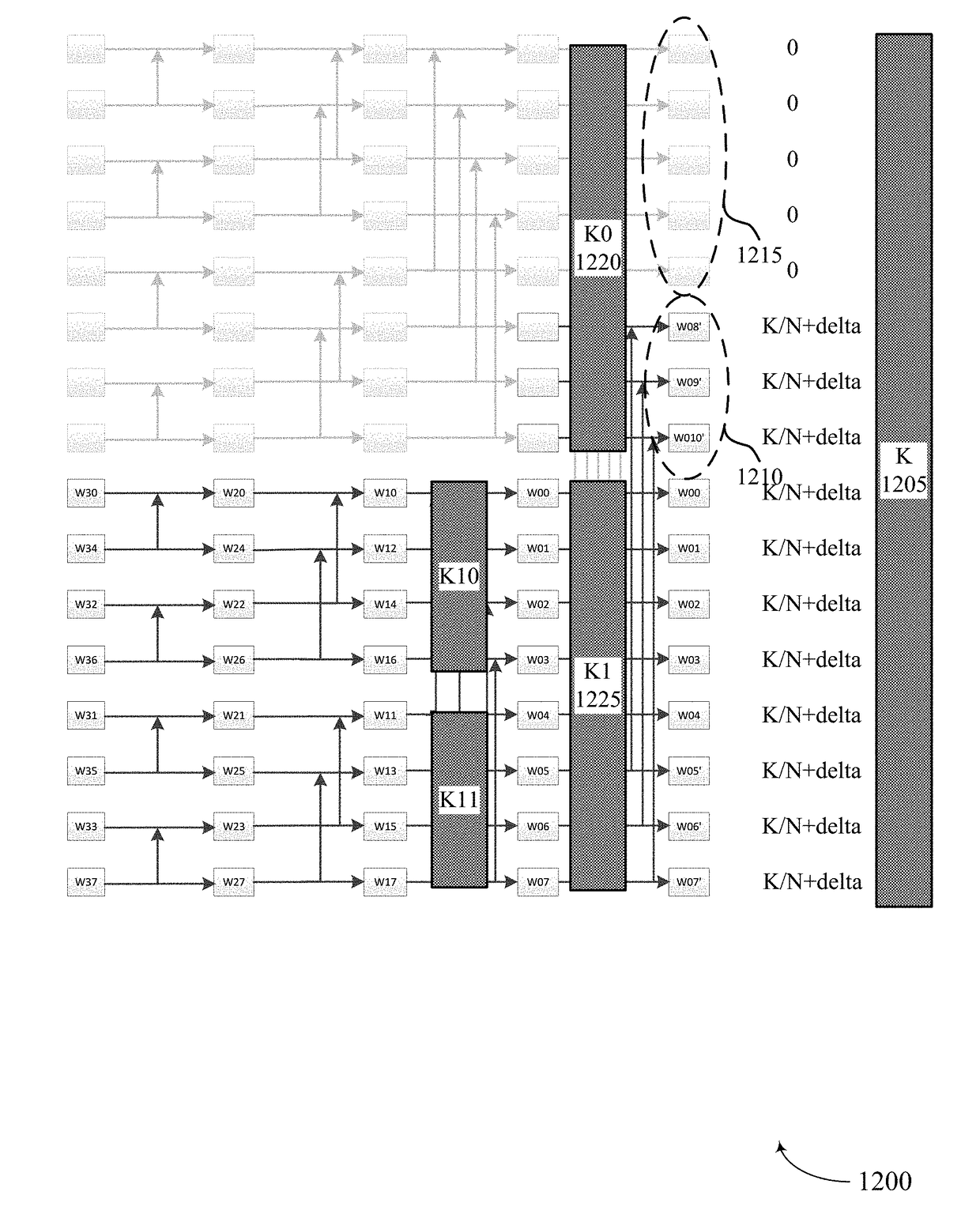Mutual-information based recursive polar code construction
a recursive polar code and information-based technology, applied in the field of wireless communication, can solve problems such as challenges in the selection of channel instances used for information bits
- Summary
- Abstract
- Description
- Claims
- Application Information
AI Technical Summary
Benefits of technology
Problems solved by technology
Method used
Image
Examples
Embodiment Construction
[0054]Techniques are described for enhanced performance of polar codes where puncturing or bit repetition is employed. According to one implementation, a base station may encode a set of bits for a transmission to a UE using a polar code. The number of bits generated by a polar-code encoder may be determined based on a power function (e.g., 2N). To achieve a given code rate or codeword size for a transmission, more bits may be generated than are transmitted for the given code rate or codeword size. In such cases, a base station may puncture encoded bits to satisfy a given code rate. That is, a base station may rate match an output codeword of the polar-code encoder to a number of desired bits for the given code rate by not transmitting some of the encoded bits. Because polar code construction may not account for the punctured bits, gains associated with using a polar code may be compromised. This may result in reduced throughput in a wireless communications system. In the case of bi...
PUM
 Login to View More
Login to View More Abstract
Description
Claims
Application Information
 Login to View More
Login to View More - R&D
- Intellectual Property
- Life Sciences
- Materials
- Tech Scout
- Unparalleled Data Quality
- Higher Quality Content
- 60% Fewer Hallucinations
Browse by: Latest US Patents, China's latest patents, Technical Efficacy Thesaurus, Application Domain, Technology Topic, Popular Technical Reports.
© 2025 PatSnap. All rights reserved.Legal|Privacy policy|Modern Slavery Act Transparency Statement|Sitemap|About US| Contact US: help@patsnap.com



